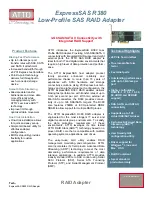
Scenario 2:1 - Flex-10 - VLAN Tagging (802.1Q) with Multiple Shared Uplink Sets (SUS) and Mapped VLANs - Windows
2003/2008 102
Figure 2-3
Server blade profile with TWO Flex-10 NICs configured. Each NIC is connected to a vNet (Prod-101-1
and Prod-101-2), which are part of the Shared Uplink Sets, VLAN-Trunk-1 and VLAN-Trunk-2 respectively. The VLAN-
Trunks are connected, at 10Gb, to a network switch, through Port X1 on VC module 1 and Port X1 on VC module 2.
Installation and configuration
Switch configuration
Appendices A and B provide a summary of the commands required to configure the switch in either a
Cisco IOS or a ProCurve network infrastructure. The configuration information provided in the appendices
assumes the following information:
•
The switch ports are configured as TRUNK ports to support VLANs 101, 102, 103 and 104. All
frames will be forwarding to VC with VLAN tags.
Note: when adding the additional uplinks to the SUS, the switch ports connected to Virtual Connect will
need to be configured for LACP and configured for the same Link Aggregation Group.
VC CLI commands
Many of the configuration settings within VC can also be accomplished via a CLI command set. In order
to connect to VC via a CLI, open an SSH connection to the IP address of the active VCM. Once logged
in, VC provides a CLI with help menus. Through this scenario the CLI commands to configure VC for each
setting will also be provided.
Configuring Fast MAC Cache Failover
•
When an uplink on a VC Ethernet Module that was previously in standby mode becomes active, it
can take several minutes for external Ethernet switches to recognize that the c-Class server blades
can now be reached on this newly active connection.
















































